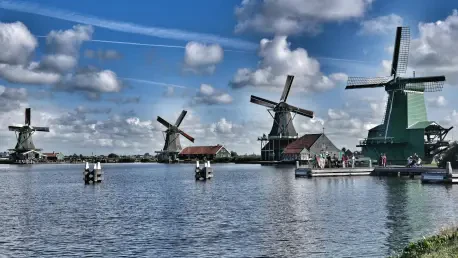Imagine a Europe where clean energy powers nearly every aspect of daily life, from electric vehicles humming through city streets to industrial plants running on renewable sources, yet the very system that supports this vision struggles with instability and slow growth. This scenario captures the current state of the European electricity market, where remarkable strides in decarbonization coexist with persistent challenges. Recent data reveals that renewables and nuclear energy accounted for an impressive 72% of electricity generation in 2024, driving down wholesale prices significantly. However, market volatility, regional disparities, and sluggish demand growth threaten to undermine these gains. As the region pushes toward ambitious climate goals, the need to accelerate electrification across multiple sectors becomes increasingly urgent. Addressing these complex issues requires not only innovative policies but also substantial investments to ensure a stable and affordable energy future for all.
Electrifying Sectors to Drive Demand
The slow recovery of electricity demand in Europe remains a critical barrier to achieving broader energy transition objectives. In 2024, demand grew by a mere 1%, still lagging 7% below pre-crisis levels, which hampers progress toward the EU’s target of 32% electrification by 2030 as part of the Clean Industrial Deal. This stagnation reflects a hesitancy in adopting electric solutions in key areas such as transportation, heating, and heavy industry, where fossil fuel dependency persists. Boosting demand through widespread electrification is essential to stimulate investments in clean energy infrastructure and to align with climate commitments. Targeted incentives and regulatory frameworks could encourage businesses and households to transition to electric alternatives, thereby creating a virtuous cycle of increased demand and expanded renewable capacity. Without such momentum, the risk of missing critical milestones looms large, potentially delaying the shift to a sustainable energy landscape across the continent.
Investing in Infrastructure for Stability
While clean energy integration has lowered average wholesale electricity prices from a staggering €227/MWh in 2022 to €82/MWh in 2024, market volatility continues to pose significant challenges. Regional disparities are evident, with areas still reliant on fossil fuels experiencing price spikes—exceeding €150/MWh for nearly 7% of the time in 2024—while oversupply in other regions led to negative pricing for over 3% of the time. These imbalances highlight the urgent need for robust investments in grid enhancements, energy storage, and flexibility mechanisms to better manage supply and demand fluctuations. Such infrastructure upgrades are vital to smoothing out price volatility and ensuring reliability across diverse markets. As emphasized by industry leaders, strategic funding and policy support for these systems can bridge the gap between current progress and long-term stability, paving the way for a more cohesive and resilient energy network that benefits all European regions.









